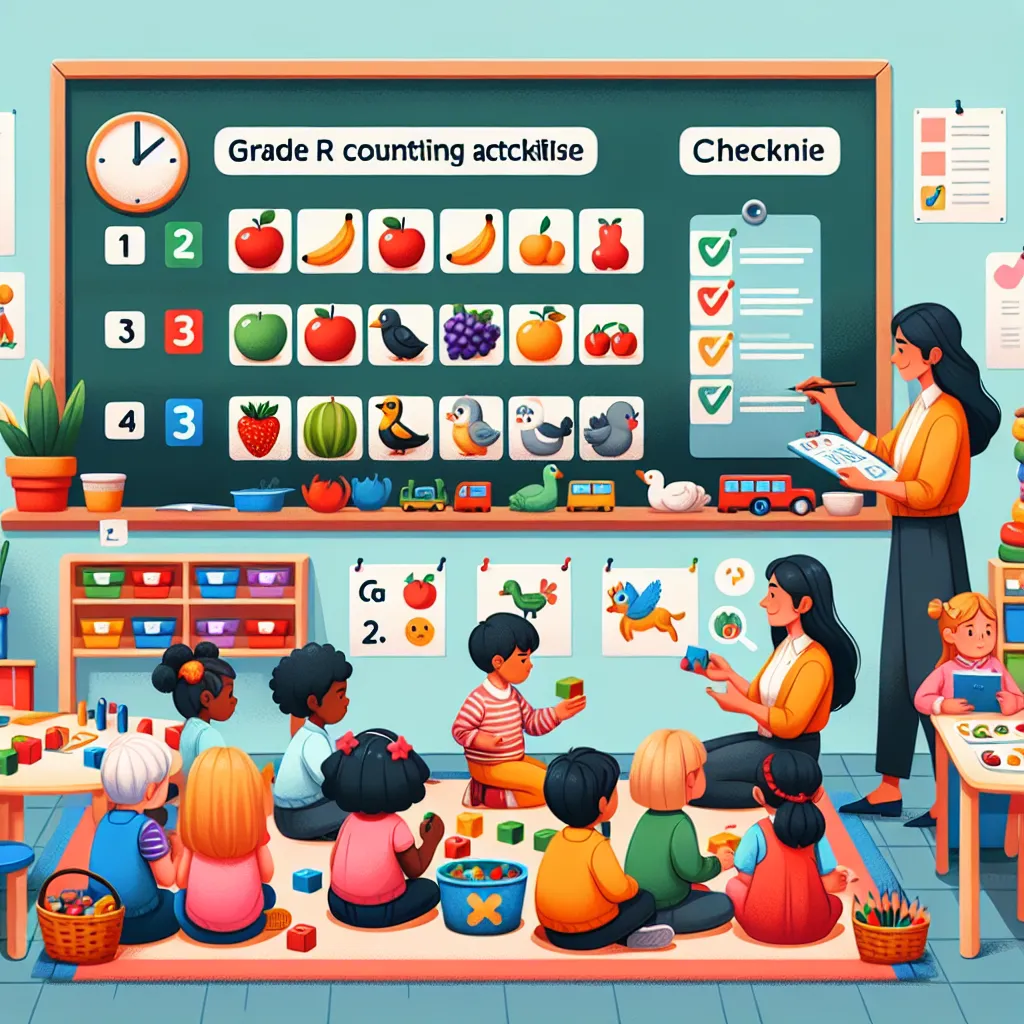Ask AI on The Internet
Question: A checklist is a recording tool developed from a range of learning objectives or assessment criteria found in curriculum policies. Using the steps from your learning guide, design your own checklist for an activity on counting that is appropriate for Grade R. (6) The checklist should have at least (6) criteria.
Designing an effective checklist for assessing counting skills in Grade R involves identifying key learning objectives and ensuring the criteria are clear and measurable. Here's a step-by-step guide and an example of a checklist for a counting activity: ### Step-by-Step Guide: 1. **Identify Learning Objectives:** - Determine what counting skills you want to assess based on curriculum standards for Grade R. 2. **Break Down Skills:** - Break down the counting skills into specific, observable actions or competencies. 3. **Develop Criteria:** - Create specific, measurable criteria that align with the learning objectives. 4. **Use Simple Language:** - Ensure the criteria are stated in simple language appropriate for Grade R assessment. 5. **Organize Logically:** - Sequence the criteria logically to reflect a progression of skills. 6. **Provide Space for Notes:** - Leave space for additional notes or comments about the child's performance. ### Example Checklist for Counting Activity for Grade R: #### Counting Activity: "Counting Objects up to 10" | Criteria | Yes | No | Comments | |----------|-----|----|----------| | 1. Can identify and count objects from 1 to 5. | | | | | 2. Can identify and count objects from 1 to 10. | | | | | 3. Can point to and count objects in a group accurately. | | | | | 4. Demonstrates one-to-one correspondence (counts each object only once). | | | | | 5. Can recognize and name numbers from 1 to 10. | | | | | 6. Can count out a specific number of objects when asked (e.g., "Please give me 4 blocks"). | | | | | 7. Uses counting strategies (e.g., moving objects, lining them up). | | | | **Instructions for Use:** 1. **Identify Objectives:** - The checklist targets the ability to count objects accurately, recognize numbers, and use counting strategies. 2. **Observe Performance:** - While the child is engaged in the counting activity, observe and record their performance by marking “Yes” or “No” for each criterion. 3. **Add Comments:** - Use the comments section to note any specific observations, patterns, or unique approaches the child uses. This could include remarks about their confidence, accuracy, or strategies applied. ### Implementation Tips: - **Activity Design:** - Design several engaging counting activities that allow children to demonstrate these skills, such as counting blocks, beads, or other manipulatives. - **Informal Setting:** - Conduct the assessment in an informal, play-based setting to help children feel comfortable and perform naturally. - **Feedback Sharing:** - Use the checklist to provide specific feedback to parents and caregivers about their child's counting skills and areas for improvement. This checklist approach provides a structured yet flexible method to assess foundational counting skills in young learners in a way that aligns with educational objectives for Grade R.
Think your answer is better than the AI's? Post it below.
Other Most Relevant Posts:
 Title: Literacy Lesson Plan: Exploring the Magic of Storytelling
Grade: R (Reception/Kindergarten)
Lesson Objectives:
1. Introduce the concept of storytelling and its importance.
2. Enhance listenin
Title: Literacy Lesson Plan: Exploring the Magic of Storytelling
Grade: R (Reception/Kindergarten)
Lesson Objectives:
1. Introduce the concept of storytelling and its importance.
2. Enhance listenin
 Grade R Lesson Plan: Exploring Numbers through Counting (Mathematics)
Lesson Objectives:
- Students will be able to recognize and count numbers from 1 to 10.
- Students will demonstrate understanding
Grade R Lesson Plan: Exploring Numbers through Counting (Mathematics)
Lesson Objectives:
- Students will be able to recognize and count numbers from 1 to 10.
- Students will demonstrate understanding
Question Tags
If you want your question answered by an AI, click here.





Post your own comment: